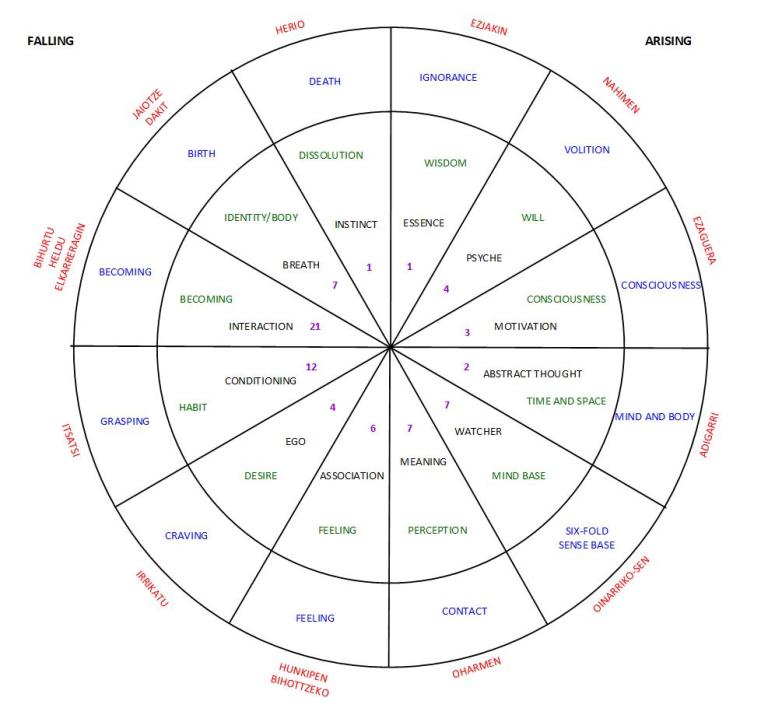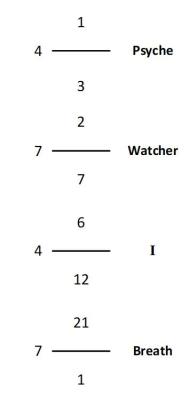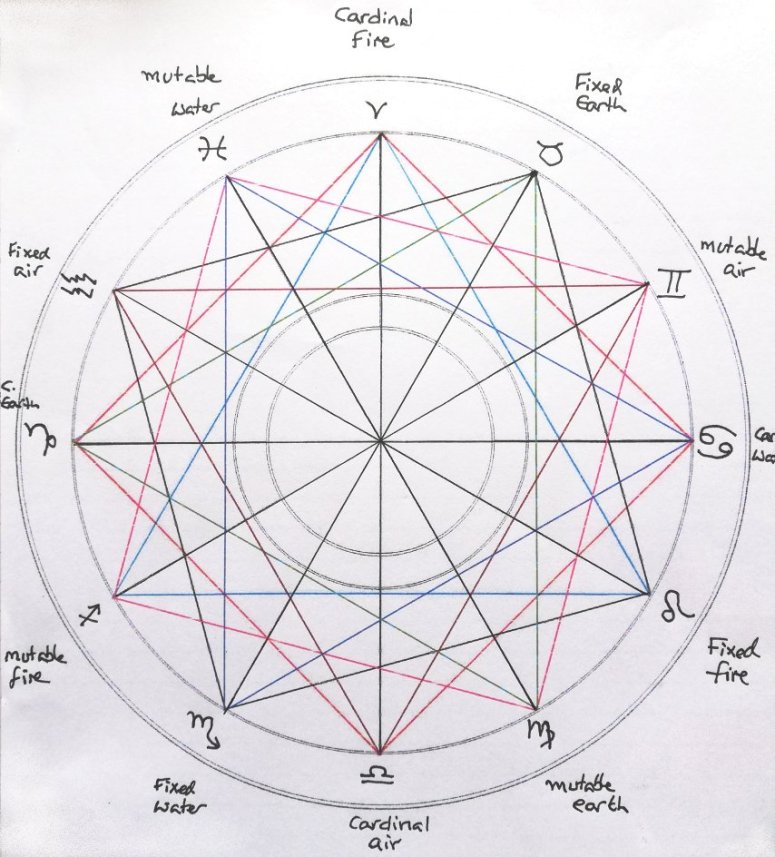This article is also available as a printable PDF file: Gogo and Haragi
GOGO and HARAGI: diagrams 22 and 23 in the Sareoso Series
Diagrams 22 and 23 can be amalgamated into a single one with twelve divisions, which is similar to the dependent origination diagram (diagram 29). The diagram is also similar to one in the 12th meeting of Worm Dragon Angel Seminars.
In the amalgamated diagram, the six divisions of the Gogo diagram 23 (Ezjakin, Nahimen, etc.) progress clockwise on the right hand half of the diagram. The six divisions of the Haragi diagram 22 (Herio, Jaiotze Dakit, etc.) progress anti-clockwise on the left hand half of the diagram.

Also shown on the amalgamated diagram is the Saros Octave of Man, illustrated below. For more information see The Octave of Man.
In the discussion below the names “Watcher” and “Sentinel” are used interchangeably, as are “I” and “Ego”.
The numbers shown on the amalgamated diagram are taken from the number of sub-divisions in each division of the Gogo and Haragi diagrams, and correspond to the Octave of Man.

Questions raised:
Why are the intervals filled by 4 and 7?
Why is Psyche the same as Will and why are they 4-fold?
Why is I the same as desire/craving and why is it 4?
Why is Mind Base the same as Watcher and why are they 7-fold?
The simple answer to the question of why 4 and 7 at the intervals is that they relate to Worlds and Cosmoses.
Perhaps it is not so with all octaves but specifically to the mind of man.
Are the intervals on the downward octave 4-fold and upward 7-fold? Or is it the other way round?!
The 12 is describing the whole of conditioning and how conditioning gives rise to consequences. Intervals are the points we can wake up.
One possibility for the question regarding psyche and 4 in Gogo is that it relates to Action, Memory, Choice and Procreative in the tetrahedron. In the diagram this corresponds to the 4 elements.
Why does Ego in the Haragi diagram correspond with a 4 based interval but the picture is 7 based? Why is Breath labelled 7 but has a 4 based picture? Might the 7 senses go together with Breath? The moment when a baby begins to take in sensory data from the world?
The Sentinel and Breath are present from birth. Ego is organised through life. Is Psyche developed through life or fully formed at birth?
Can the Sentinel be developed through life? The Sentinel and Breath generally operate mechanically but can become more conscious. In meditation we may learn to develop some control over the Sentinel in order for it to let us through. Both Breath and Sentinel are to do with the integrity of being. Being aware of the Sentinel is akin to being aware of Breath. As the sphere of I expands it encompasses Sentinel and Breath.
Will and I are to do with the creation of worlds.
The Mind Base is the precondition for perception. The Mind Door and the Sense Door are involved in the whole process of perceiving. 7 factors make up the Mind Base which translate from the Basque as Cause, Origin, Effect, Truth, Common Sense, Thought and Relationship. In Sareoso Mind is 7-fold.
The Gogo and Haragi diagrams are to do with the relationship between the Mind and Body. The unity and difference between mind and body perhaps. In this discussion we are approaching the whole thing from the point of view of mind so it is limited. To fully understand the diagrams we have to approach it from both.
A link to the Spheres of the Tetrahedron animation on the Moldatu website, describes the tetrahedron in terms of 3 layers, the endosphere, mesosphere and exosphere. The volume of the exosphere is equal to the volume of the central endosphere, plus the equivalent of 11 of the mesophseres. Since the tetrahedron itself is formed from 4 mesopsheres, this leaves the remainder of the exosphere as consisting of the equivalent of 7 mesospheres. The diagram includes a mathematical proof. (This description and proof is available on the Sareoso blog here.)
The amalgamation diagram has the octave going clockwise in Gogo diagram (i.e. between 1 (4) 3 2 7 (7) 1) and anticlockwise in Haragi diagram 1 6 (4) 12 21 (7) 1. The amalgamation is clockwise only. The diagram in the Worm, Dragon, Angel booklet for the 12th meeting, which includes dependent origination and the mega octave, has both clockwise and anticlockwise directions. Is this relevant? And might the Adam/Gaia counter-directions relate to Gogo (Adam) and Haragi (Gaia)?
At a previous meeting we discussed:
4 = Materiality
7 = Impressions
Can you have a body without impressions to make it out of?
How can you receive impressions without a body?
Cosmoses make the Worlds but there can’t be Cosmoses without the Worlds.
When associations arise, feelings arise (relevant to dependent origination).
Feeling is a package of energy. When it is triggered, energy is released. The trigger can be an internal (new feeling) or external (new perception).
The impression produced is referred to sentinel and thereby to an organised level of self (Big I). New impressions don’t trigger conditioned associations. They need to be digested. Big I forms a new association after digestion. It is the job of Mind not body to do this.
Seek stimulation to be organised. Able to use more potential. To be able to become more of what you can (be?)
Taken from notes made at a SAREOSO meeting, October 7th 2019





